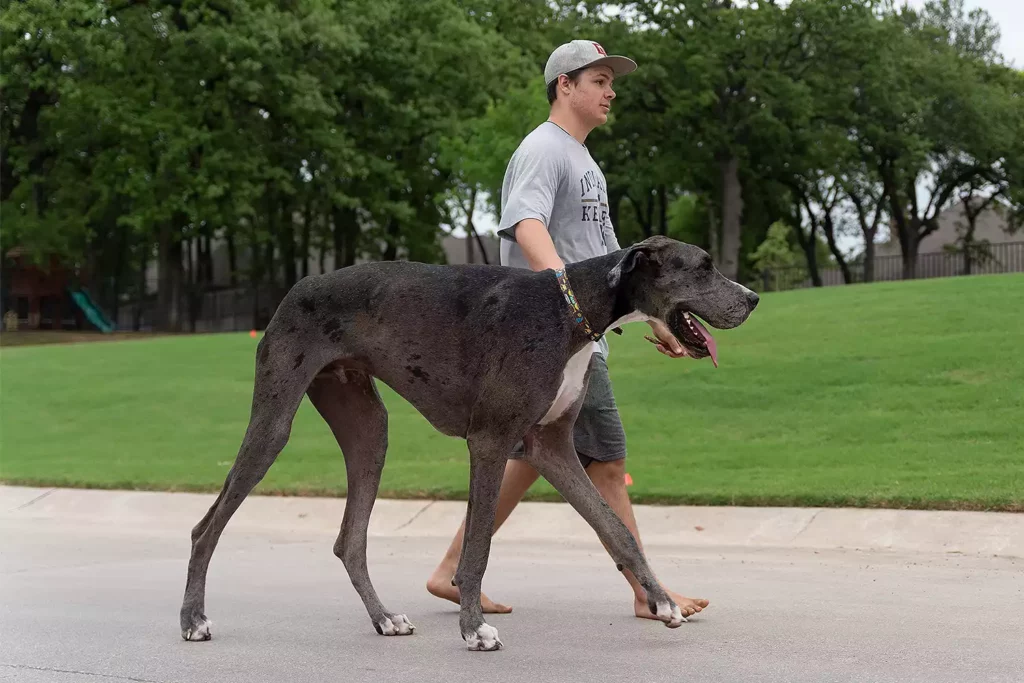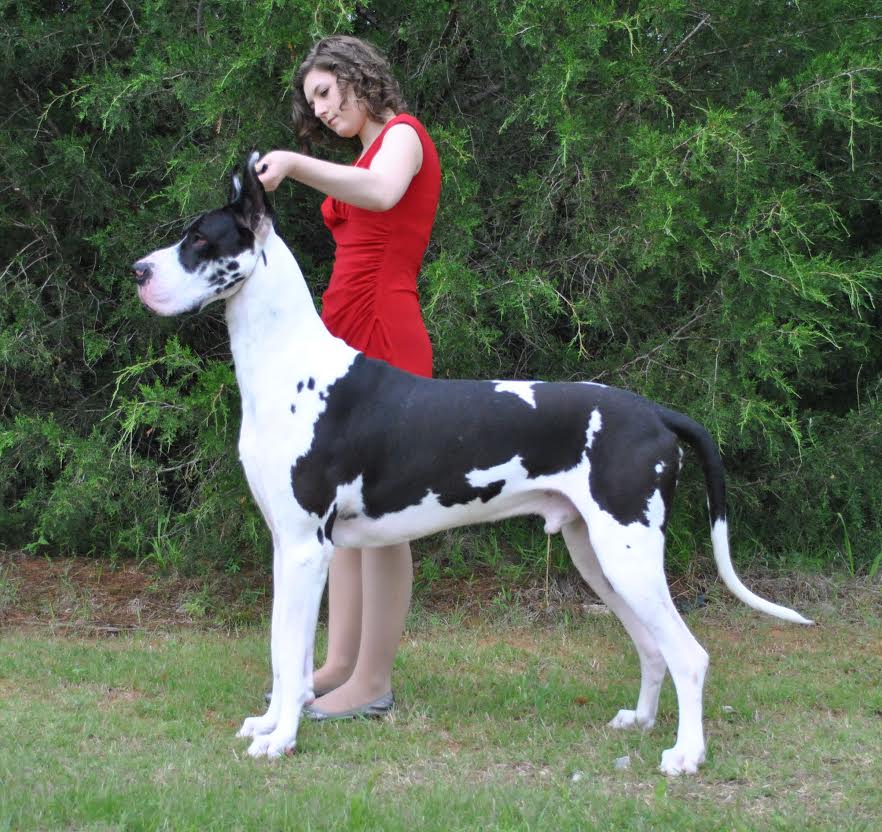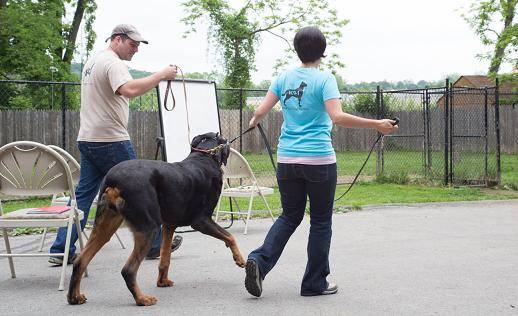Learning Objectives
- Identify the reasons for desexing
- Determine the effect/s of desexing based on breeds
- Determine the effect/s of desexing based on weight
- Identify the appropriate age when to neuter the pet
Introduction
Desexing is any procedure that reduces a dog's fertility, typically by removing the testes or ovaries surgically—also known as gonadectomy. Surgical neutering of companion dogs is widely recognized as an important method of population control with health and behavioral advantages.
The prevention of reproductive tract diseases like mammary tumors and pyometra, and parturition-related disorders such as metritis, mastitis, and dystocia in female dogs and testicular and prostatic illness in male dogs are among the claimed health advantages. Sexually dimorphic behaviors like wandering, mounting, and urine marking in male dogs, also behaviors connected with pseudopregnancies in bitches, are related to behavioral benefits.
However, many recent research studies have revealed that the health advantages of neutering may be less pronounced than previously thought, and that neutering may potentially have detrimental health consequences, such as the development of joint illness, obesity, and neoplasia. While this is alarming, some variables might affect the validity of these studies' findings and the extent to which they can be consistently applied to all dogs. This is also true with research that looked at the impact of neutering on canine behavior.
Population Control
Irresponsible pet breeding, abandonment, and tolerance towards free-roaming dogs and cats are some of the reasons for overpopulation. Annually, millions of dogs and cats without owners are euthanized in the United States. Animals in good health are more likely to be surrendered to shelters or non-government organizations. Even though low-cost surgical procedures are widely accessible, compliance with spay-neuter contracts is less than 60%, thus allowing intact animals to re-populate.
Desexing Methods
There are two types of desexing procedures: surgical and non-surgical.
Surgical Methods
The most used desexing methods would be surgical procedures which primarily include two main types. The first type fundamentally includes removal of gonads (orchiectomy, ovariectomy, ovariohysterectomy), while the second type does not (vasectomy, salpingectomy, hysterectomy), with the former being much more prevalent.
Orchiectomy
Orchiectomy is the process of removing the testes in male dogs by surgical procedure. Open and closed surgical techniques are the two basic methods of orchiectomy.
Short-term orchiectomy consequences are uncommon and usually consist of non-specific surgical risks, such as anesthetic complications, swelling, and infection.
Ovariectomy and Ovariohysterectomy
In female dogs, ovariohysterectomy is the surgical removal of both ovaries and uterus. This is the preferred procedure in older bitches and most common desexing practice in young females in North America. Comparatively, ovariectomy is the removal of the ovaries alone, which is the usual choice in desexing young females in Western Europe.
Both ovariectomy and ovariohysterectomy need a laparotomy (abdominal incision) to get access to the operative site. Midline and flank incision are two regularly utilized surgical techniques in female dogs for both surgeries. The midline incision is the more frequently used, whereas the flank incision is often implemented in shelters, narrow-bodied dogs, or dogs with substantial mammary growth.
For female dogs, the two surgeries have been reported to be done through laparoscopy. This process may be related to fewer indicators of post-operative discomfort and shorter recovery periods; however, these usually come at higher costs.
Short-term consequences from ovariectomy and ovariohysterectomy are uncommon and are primarily restricted to non-specific surgical and anesthetic complications.
Non-Surgical Methods
Non-surgical procedures to induce infertility and suppress libido in dogs are categorized into three classifications, namely: hormonal, immunological, and chemical (sclerotization).
Hormonal Methods
Progestins have been used to cause reversible infertility in both male and female dogs. These have also been understood to decrease libido and estrus and certain testosterone and estrogen-related effects. These include progestogens (i.e., megestrol acetate, medroxyprogesterone, and proligestone) and competitive steroid hormone inhibitors like cyproterone acetate. Such options can easily suppress estrus and fertility in female dogs, but they have been less effective in male dogs. Also, exogenous testosterone has been effectively used to inhibit fertility in both male and female dogs; however, its unwanted androgenic side effects make it unsuitable for use.
GnRH superagonists, like deslorelin, have lately been utilized to effectively cause reversible infertility in both male and female dogs. This can last months to years via slow-release subcutaneous implants. Following an initial gonadotropin surge that may induce fertile estrus in females, these implants inhibit gonadotropin release in the pituitary gland, resulting in gonad downregulation, resembling the effects of gonadectomy. This leads to infertility and undetectable sex steroids within 6–8 weeks subsequent to implantation.
Although not commercially accessible in North America, these implants are now routinely utilized in veterinary practice in Europe and Australia. It was also proposed that using it may help canines postpone puberty by many years.
Immunological Methods
Several immunological approaches have been examined to produce infertility in both male and female dogs. Although tests on free-roaming dogs have shown encouraging results, none of the tested products have yet been implemented in clinical practice. Sperm antigens, the oocyte's zona pellucida, GnRH, and LH have all been proposed and tested as immunization targets.
Sclerotization Methods
Chemical and physical means of sclerotization methods have been used on male dogs, all of which are directed to the testicle, epididymis, or vas deferens. Chemical agents include intratesticular injections of calcium chloride or zinc gluconate, intraepididymal injections of chlorhexidine gluconate, zinc arginine or formalin, and injections of ethanol, silver nitrate, acetic acid, formalin, sodium tetradecyl sulfate, sodium morrhuate, or potassium permanganate, which are administered into the vas deferens. While physical means involve ultrasound application to target the whole testicle or epididymis, it has yet to be applied in clinical practice.
Anesthetic and Surgical Risks
Puppies have a higher body surface area to mass ratio than adult dogs since they are often leaner and have lower body weight. As a result, many anesthetics used in younger patients must be calculated thru body surface area rather than body weight. Higher dosages may be necessary to compensate for their faster metabolic activity.
Because of the low subcutaneous fat storage, limited thermoregulation, and high body surface area to mass ratio, younger patients are more prone to hypothermia, increasing the risk of morbidity or mortality. This may happen during induction or preparation.
To minimize the risk of hypothermia:
- Avoid unnecessary wetting during surgical preparation
- Use a heated operating table or heating pads
- Provide warming support
To minimize the risk of hypoglycemia:
- Prepubescent patients should be given priority when it comes to surgery
- Feed patients after recovery when appropriate
It is vital to prevent extended surgery and anesthesia as well as perioperative heat loss. Lengthy fasting puts the patients at risk for hypoglycemia. In addition, cryptorchid patients should not be castrated until six months old.
General Recommendations:
- Minimize anesthetic dose and time
- Monitor body temperature and pain
- Use heat pads as necessary and pulse oximetry
- Weigh patients appropriately to avoid overdose
In patients less than 4 to 5 months old, altered ability to metabolize and excrete anesthetic agents and medication (due to underdeveloped renal and hepatic function), decreased protein binding of medications in the blood, risk of hypoglycemia (resulting from decreased gluconeogeneses) and limited glycogen storage, and reduced capability to thermoregulate are significant concerns. Patients less than ten weeks old should not fast for more than 3-4 hours, and older ones should not fast for more than 8 hours.
Most common anesthetic complications:
- Cardiac dysrhythmias
- Gastric dilation
- Drug overdosage
Reported short-term complications of OV or OHE
- Hemorrhage of the ovarian or uterine pedicle
- Passage of bloody vulvar discharge
- Onset of pseudocyesis
- Dehiscence or infection of the incision
- Peritonitis or evisceration (very rare)
Long-term complications of OV or OHE:
- Ovarian remnant syndrome
- Ligation of a ureter with subsequent hydroureter
- Ipsilateral renal dysfunction
- Granuloma of the uterine or ovarian pedicle
- Disease of the uterine stump
Bleeding may be more prevalent when surgery is done during estrus when bitches are under the influence of estrogen. Also, a higher frequency of complications is linked with longer surgical duration and increased patient body weight.
Health
A recent study shows that early neutering (under 12 months) may raise the risk of several health issues, whereas later neutering may not. However, studies are still inconclusive regarding whether or not the data applies to all dogs or just selected groups of dogs.
Neutering has been reported to contribute several health benefits for dogs. For female dogs, it has been shown to reduce the incidence of mammary gland and uterine illness. For male dogs, such procedures reduce chances of testicular and prostate cancer in male dogs.
Regarding the claimed health advantages of neutering, there is a link between early spaying and a lower incidence of mammary tumors. Spaying also prevents cases of pyometra.
On the other hand, castration minimizes the likelihood of male dogs acquiring testicular cancers and other disorders impacted by testosterone, such as benign prostatic hyperplasia. When age is considered, the possibility of developing particular joint problems and malignancies seemed to be greater in dogs neutered earlier (under 12 months) than later.
However, various researches in the past decade have revealed that neutering has also been linked to harmful health impacts.


Based on Weight
New research found a link between body weight and neutering with a higher risk of joint problems. Dogs beyond the 20 kg threshold weight are at higher risk for joint diseases. With malignancies, there is no coherent conclusion which is certainly due to the variety of breeds present in mixed breed dogs and breed-specific variances in cancer sensitivity.
The data from the study imply that the chance of a joint issue after early neutering may be anticipated based on the dog's weight. Those expected to reach 20 kg as adults have a 20% greater risk of joint diseases than intact canines.
Based on Breeds
When it comes to the increased risk of joint diseases and malignancies from neutering at different ages, occurrences may vary by breed and sex. As an example, for Boston Terriers, neutering females at the typical 6-month age did not raise the incidence of joint diseases or cancers, whereas neutering males before a year did.
In Cocker Spaniels, males neutered at six months had no increased risk of joint problems or cancer, whereas females spayed before two years had a 17% increased risk of cancer.
Among the smaller breeds – Cavalier King Charles Spaniel, Chihuahua, Corgi, Dachshund, Maltese, Pomeranian, Toy Poodle, Pug, Shih Tzu, and Yorkshire Terrier – the incidence of joint diseases is almost negligible in both intact and neutered males and females. Cancer incidence is low in both intact and neutered small-dog breeds except for the Boston Terrier and Shih Tzu – neutering increased cancer risk.
Early neutering may cause joint problems by disrupting the closure of long-bone growth plates as the animal matures. It is argued that neutering before growth plates close permits long bones to develop longer than usual, perhaps causing joint alignment issues in certain neutered dogs.
There is a considerable worry that male dogs neutered after puberty may develop undesirable behaviors like aggressiveness. While neutering males may lessen aggressiveness towards humans or other dogs in around 25% of cases, research concludes that neutering males before puberty is no more effective than fixing them after puberty.
It should be noted that differences in developmental and physiological characteristics across breeds, notably between smaller and bigger breeds, make comparisons between breeds difficult to evaluate.
Behavior
Neutering eliminates the major sources of sex hormones—testosterone from male testes, estrogen, and progesterone from female ovaries. Sex hormones begin to decline within hours following gonadectomy; however, follicle-stimulating hormone and luteinizing hormone levels rise due to the lack of negative feedback on the anterior pituitary. Generally, sex hormones function as behavior modulators, influencing the chance of certain behaviors happening.
The major reasons for spaying bitches are health concerns and population control. On the other hand, orchiectomy is to control unwanted behaviors that cause inconvenience to owners, such as roaming, mounting, abnormal urination behavior, and aggression.
According to numerous studies, neutering male dogs improved their behavior, probably due to decreased testosterone. However, other studies found range of results – no behavioral change, increased aggression, fearfulness, excitability, anxiety, and impaired trainability.
At present, there is insufficient information to influence neutering choices based on the impact on the occurrence of behaviors that are not directly controlled by sex hormones, such as fearfulness and aggressiveness.
| Intact Male | Intact Male | Increased aggression toward each other (more so when intact female present and worst when female in estrus present) |
| Intact Male | Neutered Male | Increased aggression toward Intact Male |
| Neutered Male | Neutered Male | Less aggression |
| Intact Female | Intact Female | Increased aggression (more so if a female is going into estrus) and likely increases if a male is present. |
| Intact Female | Spayed Female | Increase aggression toward intact females in general, but intact females may get more aggressive toward spayed females when going into estrus compared to usual. |
| Spayed Female | Spayed Female | Less aggression |
| Neutered Male | Spayed Female | Opposite-sex pairs are generally less aggressive toward each other than same-sex pairs, but more aggressive toward each other compared to intact opposite-sex pairings. |
| Neutered Male | Intact Female | Neutered males are less aggressive toward intact females compared to spayed females. |
| Intact Male | Spayed Female | Spayed females are less aggressive toward intact males compared to neutered males. |
| Intact Male | Intact Female | Least aggression toward each other than any combo. |
- May increase fearfulness with early spay and neuter (can play a factor in fear aggression)
- Increased dominance aggression when left intact until adulthood with males (toward humans and dogs) TESTOSTERONE
- May play a part in dominance aggression in females.
Cognitive Dysfunction
Cognitive dysfunction syndrome is a neurological illness that affects geriatric dogs. Memory loss, poor problem-solving abilities, social isolation, bewilderment, and a day-night reversal may occur. The removal of gonads accelerates the onset of cognitive impairment in dogs. Luteinizing hormone increase is linked to cognitive impairment. Thus, LH and its receptor may play a role in the development of cognitive dysfunction syndrome in neutered dogs.
Urinary Marking
Urinary marking in male dogs is a testosterone-dependent habit that begins in puberty. Desexing greatly reduced urine marking activity in male dogs regardless of age; however, one research indicated an age effect, with older dogs showing a less dramatic drop in marking after desexing. Females seldom demonstrate urine marking, and desexing does not change their urinary habits.
Most studies show that desexing male dogs decrease the occurrence of urine marking and that this doesn't change based on their age at the time of desexing.
Bite Injury Risk
The data for the decrease in human bite injury risk with desexed dogs is generally consistent; however, in the companion dog community, all studies have been undertaken in settings where desexing functions as a substitute for improved animal husbandry. The fundamental motive for a dog's biting incidence must be identified in practice.
Libido and Associated Behaviors
Libido and attraction to bitches in heat, occurring between 4 and 6 months in intact males, are regulated by testosterone. The medial preoptic-anterior hypothalamus mediates testosterone effects on sexual mounting and copulatory behavior. While desexing sexually naive male dogs often reduce desire and copulatory conduct, sexually experienced male dogs may still exhibit attraction to female dogs and copulatory behavior following desexing.
Gonadectomy was demonstrated to lower conspecific mounting and roaming in 60-90% of male dogs. However, according to one research, desexed males mounted more things, while several studies demonstrated no impact of desexing age on roaming or mounting behavior. The lack of effects of desexing on mounting behavior may be due to causes other than libido, such as anxiety or stress.
Longevity
Because of the various research designs and disparities in the population sizes and samples analyzed, studies conducted on the effect of neutering on canine lifespan all provide somewhat varied findings. Neutered dogs were shown to be less likely to die of infectious illness, trauma, vascular disease, and degenerative disease than intact dogs. Instead, they were more likely to develop neoplastic and immune-related disorders.
Most research indicates that neutered animals have longer lifespans than intact ones due to reductions in sexually dimorphic behaviors like roaming or owner engagement in the animal's care.
One research looked at the longevity of a group of extraordinarily long-lived Rottweilers and found that if left intact, they lived longer. This might be due to unique genetic characteristics in this community of dogs, unidentified hormonal changes, or a reduced prevalence of obesity in this group. As a result, the decision to desex dogs must be made individually.
Nutritional Management after Desexing
Hormonal state and decreased physical activity are two significant aspects that influence energy expenditure, resulting in a decrease in energy demand. As a result, the need to adapt nutritional management after neutering is a must.
The owner's lack of awareness of the animal's real body condition score (BCS) is one of the critical risk factors connected with the onset of overweightness and obesity. With this, determining the BCS is one of the most important aspects of post-surgical nutritional care. Proper BCS assessment in all animals aids in the early detection and prevention of weight gain; however, the examiner must be educated and experienced to provide accurate assessments.
Obesity may be more common in neutered animals. The increased risk of weight gain may be avoided by implementing effective nutritional management during the post-neutering period, emphasizing the precise calculation of energy requirements and the use of a suitable diet.
Future Research
Large-scale longitudinal studies are needed to better understand the impacts of neutering on health and behavior—observing the factors affecting health and behavior and the implications of neutering.
It is necessary to evaluate the belief that a puppy should be spayed or neutered before or at six months, or in some instances, before the first estrus. Instead, utilize available data to determine the ideal age for neutering. Breed predispositions exist for some of the problems outlined and must be considered when deciding if gonadectomy is appropriate for a patient. Consequently, with such breeds, owners must choose the optimum time for them.
To determine the ideal age for neutering, each dog should be considered an individual case, taking into account all important variables of the living setting.
While there is no sufficient support that gonadectomy causes numerous disorders, owners of predisposed breeds should take all considerations into account. Given the possibility of a longer lifetime, several owners may accept the risk of malignancies frequently linked with old age to prevent undesirable habits and illnesses like pyometra or BPH associated with an intact pet.
Data supporting the relationship between gonadectomy and increased risk of neoplastic, behavioral, immunologic, or orthopedic illnesses are inconclusive; thus, well-conducted research studies need to be investigated further. The risks could also be specific to certain breeds of dogs. Neutering a pet should be a personal choice based on a detailed conversation between the owner and the veterinarian regarding the consequences and impact on the patient.
References
Beaudu-Lange, C., Larrat, S., Lange, E., Lecoq, K., & Nguyen, F. (2021). Prevalence of Reproductive Disorders including Mammary Tumors and Associated Mortality in Female Dogs. Veterinary Sciences, 8(9), 184. https://doi.org/10.3390/vetsci8090184
Brent, L., Lissner, E. A., & Kutzler, M. A. (2021). Restoration of Reproductive Hormone Concentrations in a Male Neutered Dog Improves Health: A Case Study. Topics in Companion Animal Medicine, 45, 100565. https://doi.org/10.1016/j.tcam.2021.100565
Dinwoodie, I. R., Dwyer, B., Zottola, V., Gleason, D., & Dodman, N. H. (2019). Demographics and comorbidity of behavior problems in dogs. Journal of Veterinary Behavior, 32, 62–71. https://doi.org/10.1016/j.jveb.2019.04.007
Hart, B. L., Hart, L. A., Thigpen, A. P., & Willits, N. H. (2020). Assisting Decision-Making on Age of Neutering for Mixed Breed Dogs of Five Weight Categories: Associated Joint Disorders and Cancers. Frontiers in Veterinary Science, 7, 472. https://doi.org/10.3389/fvets.2020.00472
Hart, L. A., & Hart, B. L. (2021). An Ancient Practice but a New Paradigm: Personal Choice for the Age to Spay or Neuter a Dog. Frontiers in Veterinary Science, 8, 603257. https://doi.org/10.3389/fvets.2021.603257
Kent, M. S., Burton, J. H., Dank, G., Bannasch, D. L., & Rebhun, R. B. (2018). Association of cancer-related mortality, age and gonadectomy in golden retriever dogs at a veterinary academic center (1989-2016). PLOS ONE, 13(2), e0192578. https://doi.org/10.1371/journal.pone.0192578
Kutzler, M. A. (2020). Possible Relationship between Long-Term Adverse Health Effects of Gonad-Removing Surgical Sterilization and Luteinizing Hormone in Dogs. Animals, 10(4), 599. https://doi.org/10.3390/ani10040599
Kutzler, M. A. (2020). Gonad-Sparing Surgical Sterilization in Dogs. Frontiers in Veterinary Science, 7, 342. https://doi.org/10.3389/fvets.2020.00342
Palestrini, C., Mazzola, S. M., Caione, B., Groppetti, D., Pecile, A. M., Minero, M., & Cannas, S. (2021). Influence of Gonadectomy on Canine Behavior. Animals, 11(2), 553. https://doi.org/10.3390/ani11020553
Robinson, K. L., Bryan, M. E., Atkinson, E. S., Keeler, M. R., Hahn, A. W., & Bryan, J. N. (2020). Neutering is associated with developing hemangiosarcoma in dogs in the Veterinary Medical Database: An age and time-period matched case-control study (1964–2003). Can Vet J, 61(5):499-504.
Starling, M., Fawcett, A., Wilson, B., Serpell, J., & McGreevy, P. (2019). Behavioural risks in female dogs with minimal lifetime exposure to gonadal hormones. PLOS ONE, 14(12), e0223709. https://doi.org/10.1371/journal.pone.0223709
Urfer, S. R., & Kaeberlein, M. (2019). Desexing Dogs: A Review of the Current Literature. Animals, 9(12), 1086. https://doi.org/10.3390/ani9121086
Vendramini, T. H. A., Amaral, A. R., Pedrinelli, V., Zafalon, R. V. A., Rodrigues, R. B. A., & Brunetto, M. A. (2020). Neutering in dogs and cats: Current scientific evidence and importance of adequate nutritional management. Nutrition Research Reviews, 33(1), 134–144. https://doi.org/10.1017/S0954422419000271
Warnes, C. (2018). An update on the risks and benefits of neutering in dogs. The Veterinary Nurse, 9(3), 150–155. https://doi.org/10.12968/vetn.2018.9.3.150Yates, D. & Leedham, R. (2019). Prepubertal neutering of dogs—Some risks and benefits. Companion Animal, 24(1), 38–42. https://doi.org/10.12968/coan.2019.24.1.38






Responses